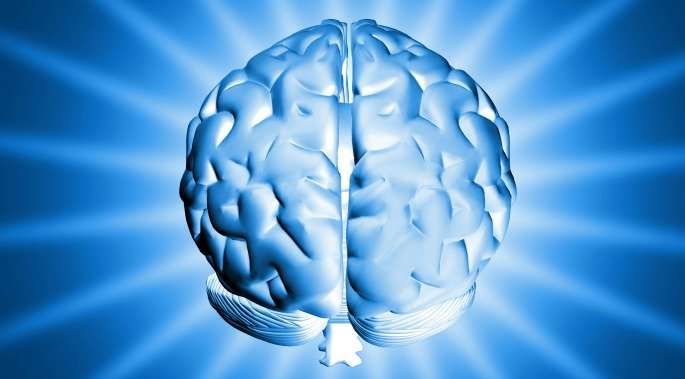
music, we could foster greater understanding and connection across diverse cultures.
Title: The Inner Harmony: Unraveling How Your Brain Literally Moves to the Rhythm
When you experience shivers from an emotionally charged tune or find yourself tapping your fingers in sync with a catchy melody, you’re participating in music at a deeper level. Pioneering studies into Neural Resonance Theory (NRT) unveil that music is not merely perceived through your ears or your intellect; it resonates through the fundamental electrical patterns of your brain and body.
Published in the esteemed journal Nature Reviews Neuroscience, this globally collaborative research—co-authored by Dr. Caroline Palmer from McGill University—marks a significant advancement in the study of sound. The results indicate that our profound bond with music is not solely a learned or cultural phenomenon but is fundamentally embedded within us.
Grasping Neural Resonance Theory
Historically, the prevailing scientific viewpoint on how we comprehend music focused on predictive mechanisms—our brains utilize patterns and past experiences to forecast upcoming notes or rhythms. Neural Resonance Theory contests this notion by demonstrating that the brain doesn’t only anticipate music—it physically aligns with it.
Each note, rhythm, and sound we perceive initiates oscillations—rhythmic electrical activities—in our neural cells. These neural oscillations sync with the music’s frequencies and temporal patterns, forming a type of internal resonance. This “neural dance” encompasses various timescales and brain systems, ranging from basic auditory routes to motor planning regions and even the vestibular system linked to movement and balance.
“Music’s potency lies not just in our ability to hear it,” states Palmer, director of the Sequence Production Lab at McGill, “but in how our brains and bodies transform into it.”
Linking Rhythm and Pitch Through One Mechanism
A key revelation from NRT is how it accounts for both rhythm and pitch using a unified biological principle: neural synchronization.
Slow neural rhythms, such as delta waves (1–4 Hz), correspond to beats and tempos, assisting us in tracking rhythm. In contrast, quicker oscillations relate to pitch perception, enabling us to recognize musical notes and harmonic connections. Remarkably, both forms of musical organization—temporal (rhythm) and spectral (pitch)—can be elucidated through our brain’s electrical activity synchronizing with consistent patterns.
This clarifies why:
– We can sense when a beat is absent in a syncopated rhythm.
– Even beginners can differentiate between consonant (harmonious) and dissonant (tense) intervals.
– Musical structures like octaves and fifths manifest across various cultures.
– Group musicians can harmonize effortlessly without external cues.
Exploring Universal Musicality’s Roots
The research also investigates why specific musical constructs—such as the octave (2:1 frequency ratio) and the perfect fifth (3:2)—are universally recognized. Simple frequency ratios foster more stable neural resonance patterns, making them easier for the brain to assimilate, recall, and utilize.
Essentially, the reason these intervals appear in both traditional Japanese music and Appalachian folk tunes is not random but neurobiological. The brain instinctively establishes a stronger resonance with simpler relationships, explaining the international resonance and recurrence of specific motifs and beats.
This phenomenon might also clarify why we find certain rhythms particularly “addictive.” Rhythmic frameworks that adhere to simple ratio patterns (like 1:2 or 2:4) facilitate more stable synchronization, while intricate polyrhythms (like 3:5) present greater challenges. Nonetheless, our attraction to complexity—such as jazz improvisation or African drumming—may stem from how these rhythms engage our neural systems without overwhelming them.
The Physical Impact of Music on Us
One of the most intriguing insights from NRT is its illumination of music’s significant emotional and physical influences. When we feel the groove, it is because our neural systems are invigorated—just enough—by syncopation and rhythmic variations. This ideal complexity stimulates the brain’s motor circuits and timing mechanisms, inviting us to move.
This physical involvement goes beyond mere toe-tapping. Research indicates that music activates regions involved in emotion, balance, and physical coordination—areas that can remain operational even in individuals with cognitive deficits.
The neural resonance also offers a scientific rationale for why melancholic melodies can provide solace or why an uplifting score gives us goosebumps: The transition from dissonance (unstable structures) to consonance (stable structures) produces emotional highs and lows that reflect our internal neurological conditions.
Real-World Applications: From Healthcare to AI
The potential implications of Neural Resonance Theory are as varied and dynamic as music itself:
– Neurorehabilitation: Innovative treatments for stroke, Parkinson’s disease, and depression might employ rhythmic training to restore motor skills or emotional balance.
– Music Education: Approaches to teaching rhythm and pitch could be tailored to align with students’ inherent neural synchronization patterns, enhancing learning results.
– Emotionally attuned AI: Systems could be created to compose or respond to music in real-time, enriching user interactions in areas ranging from gaming to therapy.
– Cross-cultural understanding: By recognizing shared neural reactions to music, we could promote greater empathy and connection among diverse cultures.